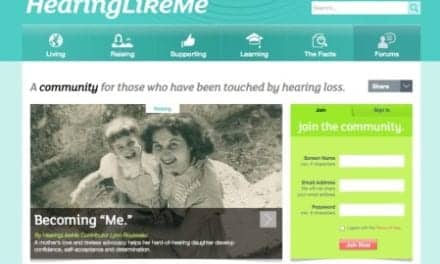Texas Health and Human Services (HHS) announced that it is recognizing Deafblind Awareness Week, June 27–July 3, by highlighting its programs and staff who work with this community.
Deafblind Awareness Week is observed the last week in June and always includes June 27 — Helen Keller’s birthday. Keller was the first deafblind person to earn a college degree in 1904 and was nominated for a Nobel Peace Prize in 1953.
An estimated 2,478 Texans have deafblindness, according to the Helen Keller National Center for DeafBlind Youths and Adults. People who have a combined hearing and vision loss require highly specialized services to live a full, independent life.
“Often when people think of a person who is deafblind, they think immediately of Helen Keller,” said Sarah Karmacharya, HHSC Blind Children’s Vocational Discovery and Development Program (BCVDDP) policy and program development team lead. “However, the population of people who are deafblind in the United States is incredibly varied and diverse. It includes people who were deafblind from birth and people who became deafblind due to disease or injury.”
BCVDDP specializes in addressing the unique needs of children who are blind or visually impaired and their families. All enrolled children receive direct skills training, parent education, and case management to reach the goals established in their Individualized Family Service Plan to become as self-sufficient and independent as possible.
One of the program’s focuses has been designing and providing direct skills training experiences for children who are deafblind and their families. In fall 2020 and spring 2021, HHS staff hosted two virtual camps that included hands-on activities to increase participants’ engagement in their home and improve daily living skills and provided family members opportunities to learn alongside their child.
According to Texas Education Agency data, during the 2020–2021 school year, 804 children with deafblindness were enrolled in Texas public schools. Approximately 289 children with combined vision and hearing loss were enrolled in BCVDDP services.
“Deafblind Awareness Week is important to recognize because the general public typically is not aware of the profound impacts that a combined vision and hearing loss can have on all aspects of a person’s life,” Karmacharya said. “One of the main barriers for people who are deafblind is lack of access to information. The general public may have a preconceived notion of what people who are deafblind can and cannot do, but with the right supports and instruction, they can lead meaningful, full, and independent lives.”
Another important focus of BCVDDP is helping families prepare for their child’s adult life. This is accomplished through parent trainings and case management.
The HHSC Deaf Blind with Multiple Disabilities program (DBMD) assists families in providing long-term support for their child with a combined vision and hearing loss. DBMD provides home and community-based services to people with deafblindness and another disability as an alternative to living in an intermediate care facility. The program focuses on increasing their opportunities to communicate and interact with their environment.
DBMD services provided are based on the specific needs of the person and on an individual plan of care developed by the service planning team, which includes (at minimum) the person, case manager and representative of the program provider.
“Many people who are deafblind have additional disabilities, such as developmental disabilities or physical disabilities,” Karmacharya said. “Because of this, the person’s skills and the assistance they need varies widely. No two persons’ strengths and needs will be the same, so services need to be tailored to the individual. HHSC programs provide direct services and supports to allow people who are deafblind to meet their individual goals.”
Source: Texas HHS





